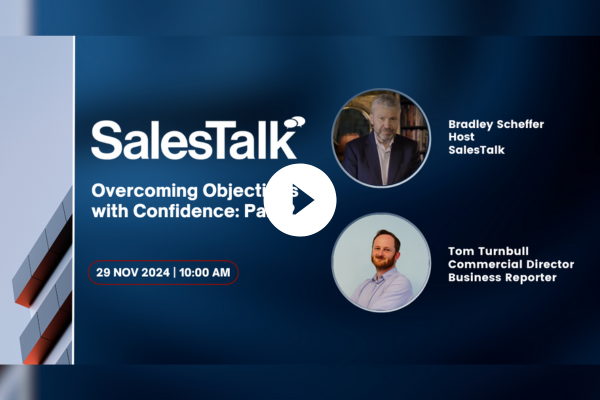Getting ahead of AI-powered job seekers

Brian Westfall at Capterra shares new data on how job seekers are using AI to land a job and the strategies businesses should implement to avoid hiring fraudulent candidates
According to Capterra’s Job Seeker AI Survey, 53% of U.K. job seekers are using AI tools to help them in their current job search. Looking for any advantage they can find to be hired, job seekers are using AI to mass apply to jobs, refine their CV, and even get real-time answers to questions in video job interviews.
Their efforts are paying off. Not only do AI users complete 42% more job applications on average, but they’re also 75% more likely to receive a job offer than those who don’t use AI.
For businesses trying to find and hire the best candidates, job seeker AI usage presents a new and complex challenge. For one thing, AI content or assistance can be hard to detect. Furthermore, the businesses that decide to ban AI usage outright or throw out any candidate they find using AI may ultimately be doing more harm than good, as some of the ways that job seekers are using AI aren’t necessarily nefarious.
Either way, it’s clear that businesses must get ahead of AI-powered job seekers now before it’s too late.
Determine which AI uses are fair or unfair
The biggest worry with any job seeker is that they are pretending to be someone they aren’t, lying about their skills or experience to land a job. This worry has only been heightened by the advancement of AI. But we find that the most common ways job seekers use AI—to write or refine their CV, find relevant job openings, or write or refine their cover letter, respectively—aren’t as deceptive as you might believe.
In fact, in many organisations, if the candidate is still truthful about their qualifications, these uses are not only tolerated but encouraged. As companies embed AI tools into more and more processes, they’re looking for workers who can demonstrate skills using these tools.
However, some AI uses by job seekers clearly cross the line and show an active effort to deceive the employer or disrupt their hiring processes. For example, we find that 29% have used AI to generate answers to interview questions, and 27% have used AI to complete a test assignment or skills assessment.
The first step for every organisation right now is to decide which AI use cases should be considered acceptable, and which ones should be flagged as cheating. This is going to be different for every business. If you’re hiring a salesperson, for example, you might not care as much about an AI-generated cover letter compared to if you’re hiring someone who needs creative skills, like a copywriter.
You also need to consider the level of risk you’re comfortable with if a deceptive applicant goes undetected. For a retailer, the consequences might be minimal. But if you recruit for a hospital or branch of government, the damage could be catastrophic.
Keeping AI deceivers at bay
Once you’ve decided which AI uses by job seekers aren’t allowed, here is how you can minimise the number of AI cheaters in your applicant pipeline.
Be clear about unacceptable uses of AI. Letting visitors to your careers page know that lying about skills or credentials using AI will result in their removal from job consideration won’t stop every cheater, but it might give some hesitancy to those that are on the fence about using AI to deceive.
Take advantage of AI yourself. If job seekers are flooding your inbox with AI-generated applications that all look the same, there are recruiting AI tools you can leverage to automatically search those applications for relevant skills and experience and float the best candidates to the top of the pile.
Eliminate phone interviews. AI teleprompter tools can feed applicants the right answers in interviews more easily if you can’t see them. Doing interviews in person or through video can increase your odds of catching applicants using these tools.
Look into AI content detection tools. Found in plagiarism checkers, and increasingly in recruiting software systems, these tools can analyse text from a CV, cover letter, or test assignment and tell you if the content was likely generated by AI.
Prioritise references. Asking former managers or colleagues if a candidate really does have the skills or experience they say they do is the best way to confirm if they’re lying or not.
Make hiring managers spend more time on hiring. We found that middle managers in the U.K. spend only 3% of their week, on average, on recruiting and hiring tasks.
Overwhelmed by other responsibilities, managers can rely too much on AI-generated content like CVs and cover letters to make a hiring decision. If they spend more time on recruiting, and consider the whole candidate in the process, they can help with fending off fraudulent job seekers.
It will only get harder
In the future, we can expect even more AI tools to hit the market that are geared towards job seekers—tools with even greater capabilities to mirror human-like behaviour and avoid detection. It is past time for employers to act.
If your business wants to hire the real top talent for years to come, you need to combine the right recruiting technology with changes to critical recruiting processes today.
Brian Westfall is the principal HR analyst at Capterra
Main image courtesy of iStockPhoto.com and gpointstudio

Business Reporter Team
Most Viewed
Winston House, 3rd Floor, Units 306-309, 2-4 Dollis Park, London, N3 1HF
23-29 Hendon Lane, London, N3 1RT
020 8349 4363
© 2024, Lyonsdown Limited. Business Reporter® is a registered trademark of Lyonsdown Ltd. VAT registration number: 830519543





